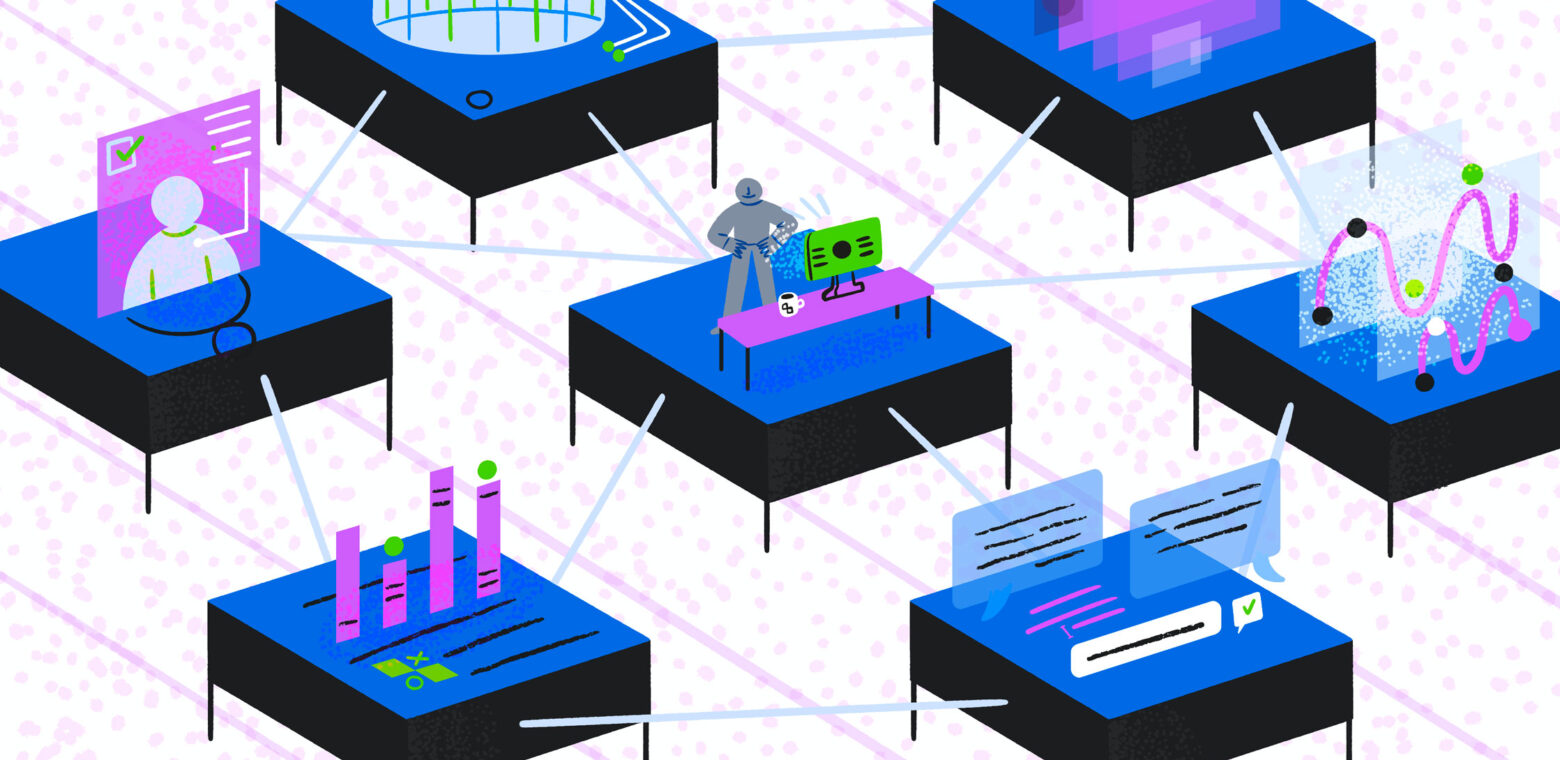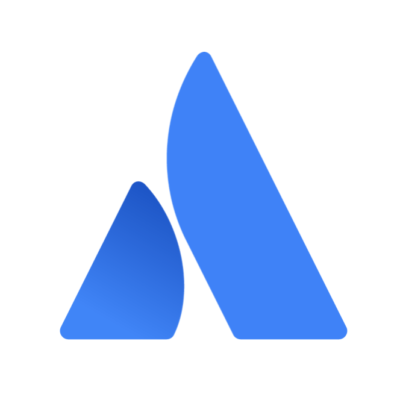AI is changing work for the better – here’s how
Two AI experts weigh in on how the technology can help teams do more and collaborate better.
AI has become a natural part of our daily lives, often without us realizing it. From making headlines with feats like Deep Blue to powering the recommendation engines that suggest your next binge-watch on Netflix, AI’s influence has grown from behind-the-scenes algorithms to a central player in our daily interactions.
AI is also transforming our work. Most engineering leaders anticipate using GenAI to build software in the future, enhancing productivity across all aspects of developer workflows – not just in code completion, but in addressing broader challenges such as technical debt, service health, and cloud cost optimizations. By taking over routine tasks, AI will allow developers to focus on core areas like business logic, architecture, and mentorship.
Learn how Atlassian keeps developers in the flow here!
And it’s not just engineering teams. Marketing teams can use AI to help aggregate themes from sales calls, program managers can use a mix of AI and automation to build robust timelines and project roadmaps, and team leads can use AI to generate summaries of dense pages to share with executive leadership.
To better understand this transformation, Atlassian’s Agile and DevOps team hosted a conversation with two AI experts: Stacey Law, a Group Product Manager who is spearheading AI work at Atlassian; and Colin Jarvis, a leader at OpenAI, known for pioneering advancements in generative AI. Both experts bring decades of experience in building cutting-edge tech and leveraging data models.
We asked Stacey and Colin how AI is already being used today in companies that employ knowledge workers, how it’s affecting employees and teams, and what changes they expect to see in the next year.
Here are five key takeaways from our conversation about real-world AI use cases and how AI will impact the future of work.
Employers want to use AI to upskill workers – not replace them
Colin and Stacey frequently talk to employers about how their organizations think about AI, and contrary to popular belief, most employers are not looking to replace their knowledge workers with AI. Quite the opposite, actually.
Many employers are afraid of employees leaving their organizations and taking valuable knowledge with them. In addition, they urgently want to upskill their workforce, in every function, at every level. They see AI as a tool to capture valuable knowledge and strengthen their workforce – not replace it.
A few examples of how AI helps upskill workers:
- Bringing insights and knowledge to them faster through improved search and defining terms
- Giving them examples to work from, such as drafting a page for a certain format or project, based on notes
- Improving writing or adjusting tone in order to write for different audiences
- Allowing people to use natural language, instead of boxing them into technical languages like JQL or SQL
The best GenAI deployments augment humans
While still relatively new, many companies are already deploying GenAI. Stacey and Colin say the best use cases they’ve seen so far are when AI supports and augments people, so they can do what they’re already doing – but better. Whether it’s supporting research or marketing campaigns or customer service, AI makes people more efficient and effective in performing a wide variety of tasks.
In one example that Colin described as a particularly “unsexy” AI deployment, a company provided its customer service agents with an “AI co-pilot” to assist them when responding to customers. The co-pilot deployed as a small onscreen window that agents could easily incorporate into their regular workflow. The AI co-pilot quickly collected and surfaced relevant information about customers and suggested a “next best action.”
So what impact did this AI co-pilot have on employees, customers, and costs?
- Employee satisfaction soared, as agents were able to better assist customers (and thus weren’t dealing with so many unsatisfied customers)
- Customer satisfaction improved, as agents had more relevant information at their fingertips. The entire experience was better and faster.
- Customer service costs decreased by 24% and agent throughput increased.
This wasn’t some rocket science application of AI; it was a simple application that augmented agents and made them faster and better at their jobs.
AI has the potential to change work processes and team collaboration
AI provides tremendous possibilities to change and expedite workflows and fundamentally change how teams work together.
For example, one company used AI to create a marketing brief generator, where a user inputs a general marketing vision and the application follows up by asking a series of questions and creating a marketing brief. The app can also generate marketing ideas and materials for a campaign. At any point, the marketing team can build on these ideas, modify them, or discard them. But this use of AI can do wonders to streamline the marketing team’s creative process.
Stacey also shared exciting ideas for how organizations can use AI internally to improve team collaboration:
- Engage in brainstorming and idea generation, using a tool such as Confluence.
- Use AI to organize these unstructured ideas and turn them into a product requirement document.
- Leverage AI to translate the product requirements into, say, a Jira project, with stories and acceptance criteria.
- Have an AI application quickly turn this information into a presentation.
At each stage, team members can review, modify, and improve on what the AI has created, but AI enhances and expedites the process.
Another intriguing possibility is to enhance collaboration by using AI as a translator – French to English, for example. A less obvious but arguably even more exciting capability is the ability to translate a document produced by one discipline or function into the language of another discipline or function. For example, AI could take a highly technical document and translate it into a simpler, easier-to-understand, non-technical document for marketing or sales functions.
Small, simple use cases can have a huge impact
When companies incorporate AI technology into their workflows, it’s often characterized as a massive transformation – and that’s true. But as the customer service agent use case showed, some of the most impactful business applications for AI right now are relatively simple.
One AI expert described the following use case: use GenAI as a tool to produce short summaries of meetings or tasks. Team members save time by self-serving answers, instead of asking multiple follow-up questions, or waiting for a teammate in another time zone to respond. These internal summaries and self-serve answers might save each user only a few minutes each day, but over an entire year, across all employees on a team or in an organization, the total impact can be enormous. Simple changes can yield big results.
Advice from AI experts: start small, prove success, and scale.
Colin and Stacey encouraged individuals and teams that are contemplating AI in 2024 to “just do it.” After seeing AI results first-hand, they challenged teams to think about big, game-changing use cases that:
- Weren’t possible without AI. How can AI now make the impossible possible?
- Were previously possible, but were very difficult. How can AI make big challenges easier?
For example, it used to take hours of editing time to turn a long video into shorter clips. But AI-assisted video editing saves non-specialists time by generating a variety of clips and captions, in just a few clicks.
Colin and Stacey advised teams to consider these big, bold ideas, then get started by running the smallest tests possible. From those tests, get experience, learn, iterate, and improve. If and when these tests work, then rapidly scale up, double down, and go for it.
Despite the many fears about AI, we’re optimistic. We believe AI will ultimately change our work lives for the better – make work easier, help teams be more creative and productive, streamline our processes, and improve how we collaborate. And we’re excited to see what’s next.













































